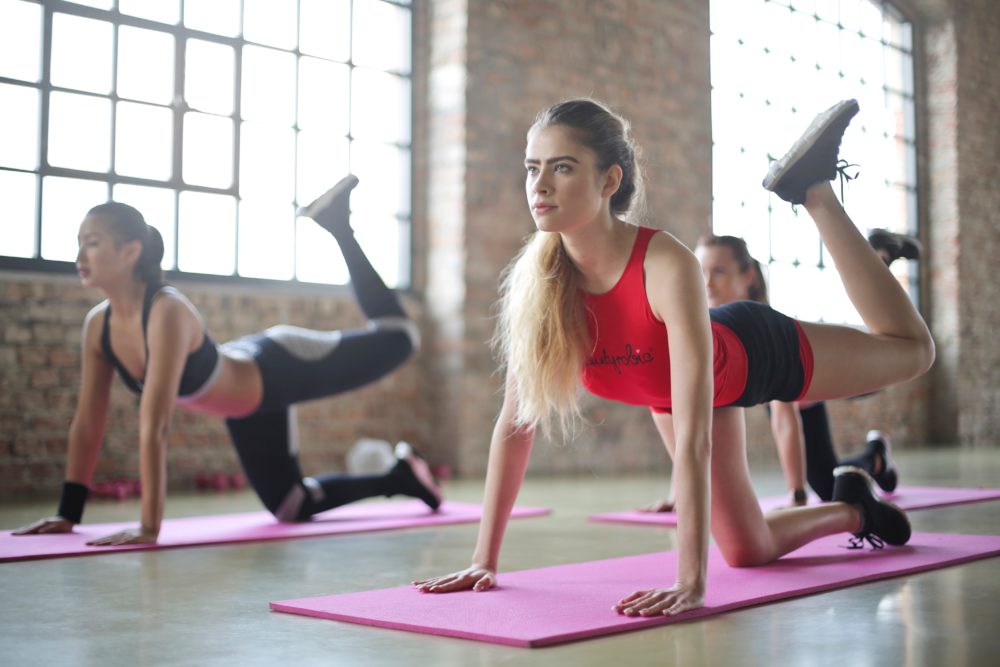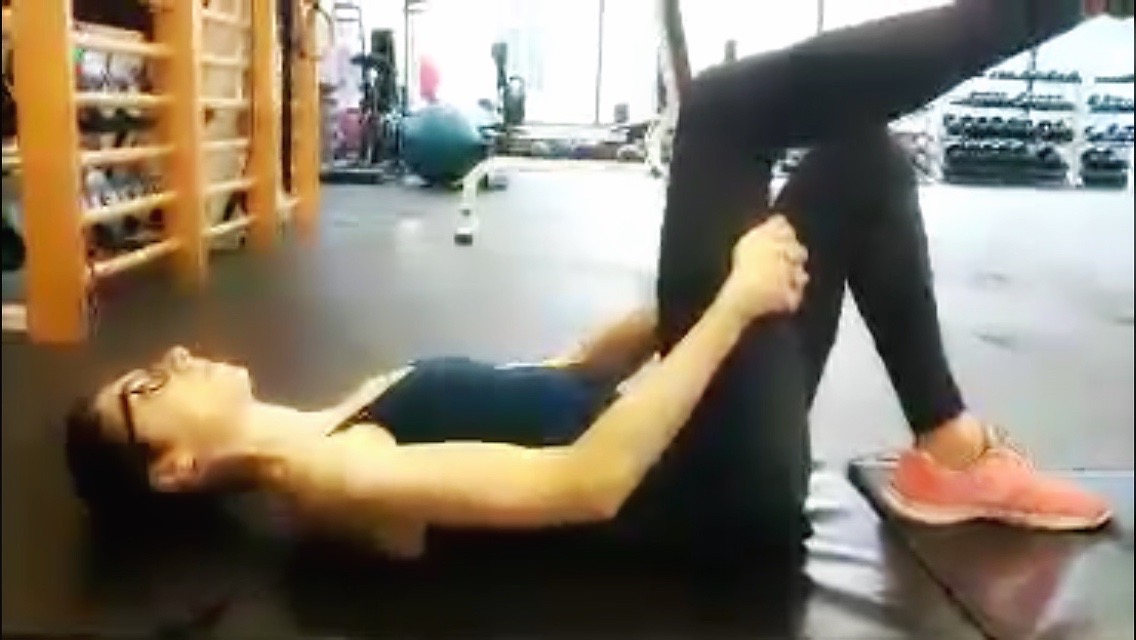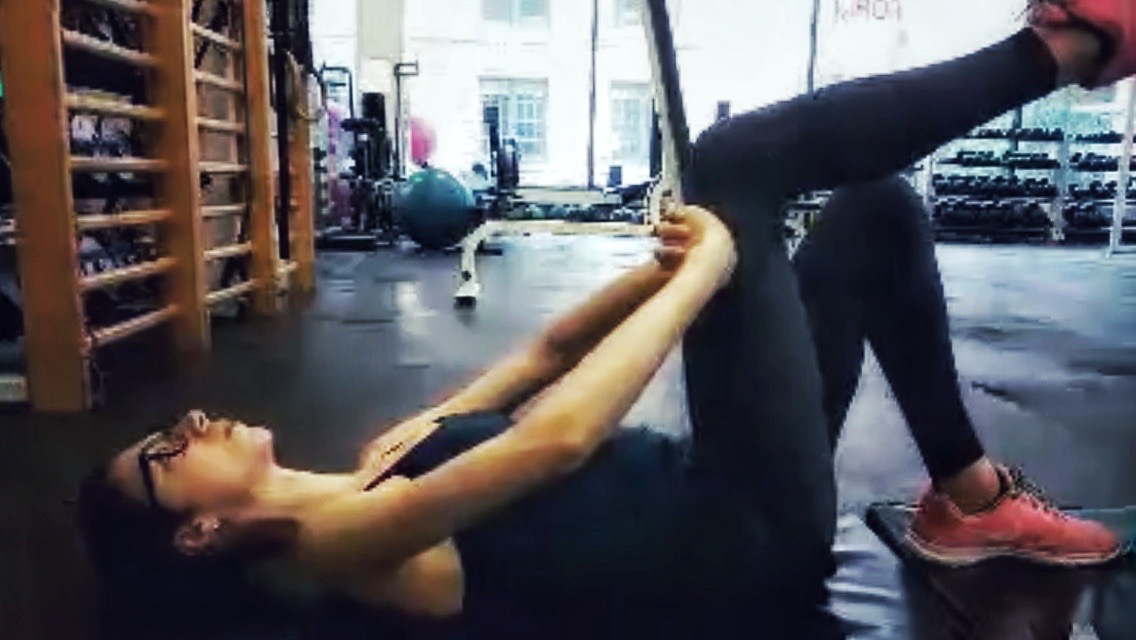
Building muscle to support your joints doesn’t have to look like this—read more about the easiest way to build the muscle of body awareness AND protect your joints.
Whether you’re a runner, a cycler, a HIIT-er, or a person who has to sit a lot for her job, you’ve probably experienced tight muscles at one point or another. Extending your limbs or standing up all the way straight takes a bit more effort, and even those just-woke-up stretches don’t quite do it. Activity of any kind has the potential to make us “feel” tight, and yet the solution is not always the passive stretching techniques we think of: hiking up a leg on a fence to get that sensation in the back of the leg, throwing your torso back behind you to iron out the front of your hips and low back that have been crunched while sitting for long periods of time, or even falling into a split in a yoga class.
Exercise science abounds with evidence that passive stretching can do great damage to the body—all you have to do is read about the extreme measures master yogis like Jill Miller have had to take in response to decades of Cirque de Soleil-style stretching. A somewhat counterintuitive technique called “active stretching” offers a safer alternative that supports connective tissue, meaning you’ll be able to do more for longer without pulling yourself apart.
Muscle Energy Technique (MET) is a specific kind of active stretching that creates isometric contractions in the muscles. Instead of lying on a table while someone pushes and pulls you around, as can happen in physical therapy or even a massage, or pumping iron with external weights, this technique makes you an active participant in the work. Using your own muscles to gently resist yourself (it is possible to have a therapist provide the resistance as necessary), you can also greatly enhance body awareness overall.

Here’s how it works: Muscles can move three different ways. They can contract and shorten (a concentric contraction, like when you bring your forearm in toward your body in a bicep curl), they can contract and lengthen (an eccentric contraction, like when you extend your leg forward to take a step walking), or they can contract and not move (an isometric contraction, like when you pick up a heavy box). Isometrics are not glamorous on the outside; if you look at someone doing such an exercise, you probably wouldn’t be able to tell because nothing is moving. But think about doing something like a wall sit, where to a passerby you’d look like you were just leaning there all relaxed, whereas your glutes and hamstrings are on fire trying to hold you up.
When joints are unstable, we want to work isometrically in order to strengthen the muscle without putting on them excess load. I’ll use myself as an example. MET has become part of my regular workouts as a way to counteract chronic “tightness” at the front of my hips (the hip flexors) and pain at the back of my pelvis, at the sacroiliac (SI) joint. Perhaps you’ve felt the former if you sit a lot during the day, too; think about how your thigh is bent relative to your hips when you sit, and you can see how over-contracting would happen there. The SI joint is where the sacrum (the set of fused bones that make up the lower part of the spine) meets the rest of the bony pelvis (the ilium).
The sacrum usually fits snugly in that space, with a few degrees of movement allowed, but sometimes can be moved out of place by habitual movements, or if you have a predisposition for more laxity (or flexibility) in your joints; it usually affects one side more predominantly. With both problems, a lack of muscular strength surrounding the joints is what allows them to fall more and more out of place. And with both problems, the action I logically want to take is stretching those areas: a deep lunge for the front of the hip, or a forward fold to release the SI joint. However, doing such passive stretches contributes to even more laxity and weakness in the surrounding muscle—the very causes of the problem.

Enter MET, where these two very simple exercises provide just the amount of work we need and in the right places. In the first, we create a contraction in the hamstring and glutes, by holding onto the back of the thigh, pushing the leg forward into the hands as the arms resist back (pulling the leg toward the body). That lock fires up the muscles at the back of the pelvis holding in the sacrum, but notice how the pelvis itself is level on the floor—the joint isn’t being aggravated. The top bent leg is what helps to keep the pelvis where it should be, and not potentially overarching (as it would if my legs were straight on the floor).

Next, you press into your thigh away from you with your hands as you push your leg back in toward the torso–coming at the lock from the other side.

You can’t tell from these photos, but my legs (and even my arms a little) are working like crazy to hold this static position. When I stand up, my pelvis feels more secure and not as wobbly as it was before the exercise. Note that I’m working on my right leg, which is where the instability is for me, but you’d repeat on both legs, holding for 10 breaths each round.
While these two examples are shown lying down, MET can be done anywhere for the very reason that it works: you don’t look like you’re doing anything at all on the outside. Sitting in traffic? Sit with your legs bent to 90 degrees, feet on the floor, and scrub your heels backward without moving your feet—hello, hamstrings. Carrying heavy groceries? Don’t just let your elbows lock out as you hold the bags at your sides, but rather pull up as the weight of the bag releases for your biceps.
This internal focus is also useful for a more spiritual component of body awareness. Because you’re the only person who can measure or identify the sensation you feel, you can’t rely on a trainer (or Instagram post) to tell you what you should look like or feel. You control the degree of effort and have to be honest when it feels like too much. And channeling that true inner strength is an even greater muscle to build for whole-body quality of life.

Have you tried Muscle Energy Technique?
Also by Jennifer: How A Trip To Costa Rica Did More For Healing My Gut Than Weeks Of Eating Ayurveda
Related: Suffering From Chronic Pain, PTSD? Why Aerial Yoga May Be A Godsend
Finally Find Relief For Your Sciatica Pain With These 4 Gentle Yoga Poses
Get more like this–sign up for our newsletter for exclusive inspirational content!
Photos: bruce mars on Unsplash, Pexels, Adobe Stock, Jennifer Kurdyla
